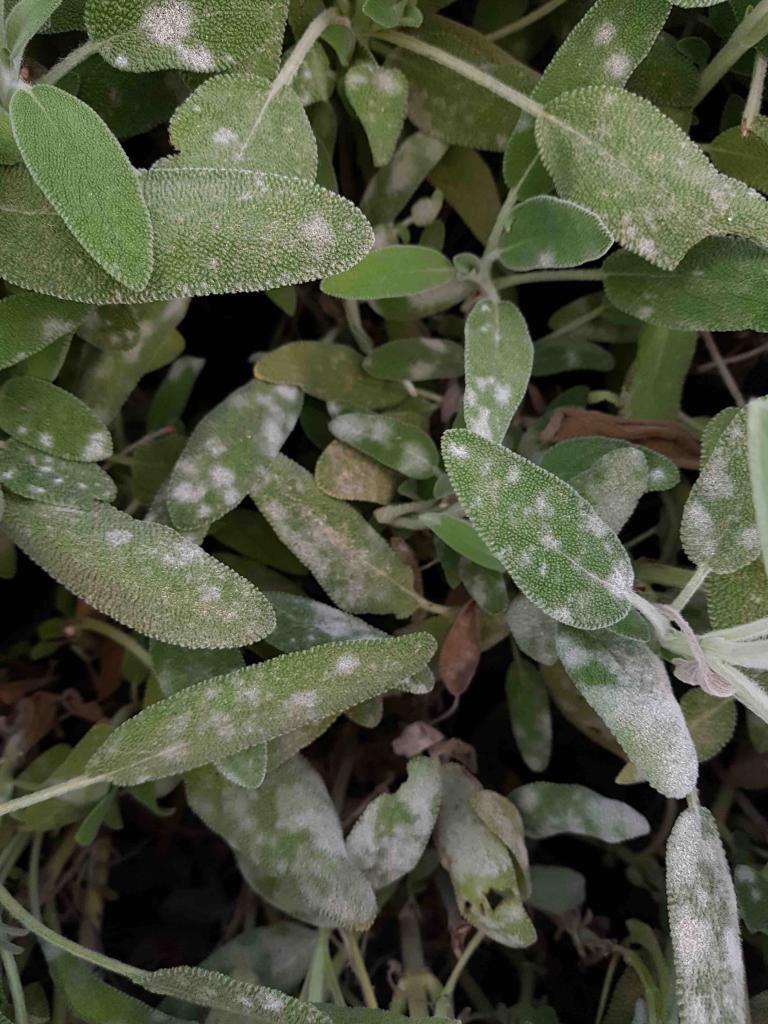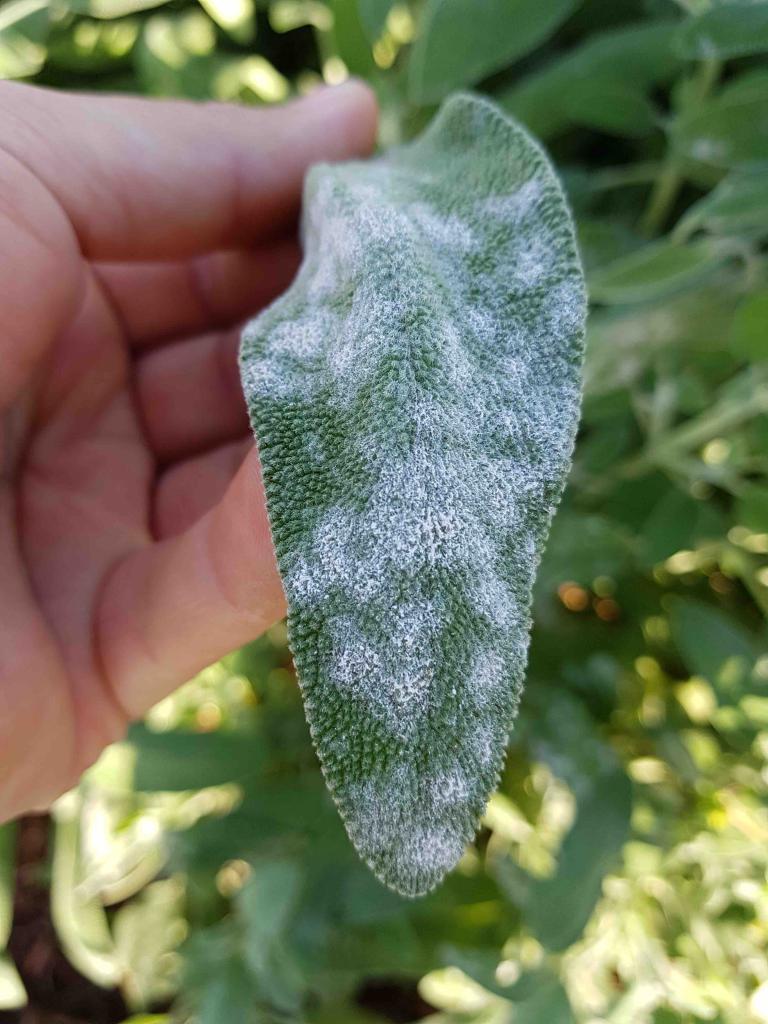Jamur bubuk sage
Sage
Powdery mildew of sage is a fungal diseases with worldwide dispersion that usually appears on the surface of leaves as white or grayish spots with a powdery-like texture, hence the name.
Generally, the disease is host-specific, which means that it can only infect plants from the same genus or family.
Powdery mildew is favored by warm climate, moderate to high humidity, low light conditions, and does not require the presence of free standing water.
Powdery mildew can cause considerable losses due to nutrient extraction, reduced photosynthesis, increased respiration and transpiration, impaired aesthetics, and overall slower growth rates in sage.
Tanaman atau bibit yang tahan terhadap penyakit merupakan syarat penting dalam budidaya.
Kebersihan area penanaman adalah hal terpenting, hindarkan tanaman dari gulma, sisa-sisa tanaman, bagian tanaman yang rusak, pertumbuhan tanaman yang tidak di ingginkan dan tanaman lain yang bukan merupakan tanaman utama budidaya.
Pada umumnya perlu adanya jadwal aplikasi yang sesuai dengan kebutuhan tanaman dan kontrol yang baik adalah dengan melakukan penyemprotan keseluruh bagian tanaman dengan tekanan tinggi, dan volume air yang tinggi juga.
Produk yang digunakan oleh satu atau sebagian dari dunia adalah mengandung bahan aktif sebagai berikut:
Group 1: penconazole, triadimenol, tebuconzole, myclobotanil, tetraconazole, propiconazole, prochloraz, cyproconazole , difenoconazole, fenbuconazole, triflumizole, and hexaconazole
Group 2: azoxystrobin, pyraclostrobin,trifloxystrobin, and kresoxim-methyl
Group 3: Sulfur, copper sulfate, bicarbonates, mineral oil, neem oil, dan detergents produk (sabun industri).
Jangan melakukan aplikasi selama 2 minggu setelah applikasi minyak, dikarenakan belerang dapat mengakibatkan kerusakan daun dan buah pada kondisi suhu diatas 32 derajat.
Tidak dianjurkan menggunakan produk dengan bahan aktif yang sama secara terus menerus dikarenakan akan mengakibatkan resistensi hama pada bahan aktif tertentu.
Produk berdasarkan tea-tree oil, potassium hydrogen carbonate+copper sulfate, dan Sulfur jenis produk adalah sulfate (debu, bersifat basah, mudah larut atau micronized)
bacillus pumilis dan Bacillus subtilis.
*Names marked in red are considered to be highly poisonous to beneficial insects.
*Names marked in green are considered to be organic and IPM (integrated pest management) compatible.
Image Gallery


